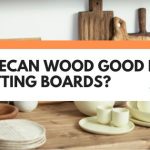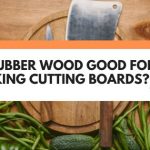Chefs and cooks can happily debate this question till the cows come home. Whilst us woodworkers are left scratching our heads over what the fuss is all about.
The question goes as follows; which grain cutting board is best for food preparation?
What’s more, what difference (if any) is there between edge grain vs face grain cutting boards?
Edge grain cutting boards are designed to have the narrow edge-side of lumber planks visible on its wide surface. Face grain cutting boards, however, are boards that have the broad face-side viewable on the surface.
Feeling a little confused? And are you still left wondering which one is better overall?
Well, lets take a further look at this popular kitchen item…
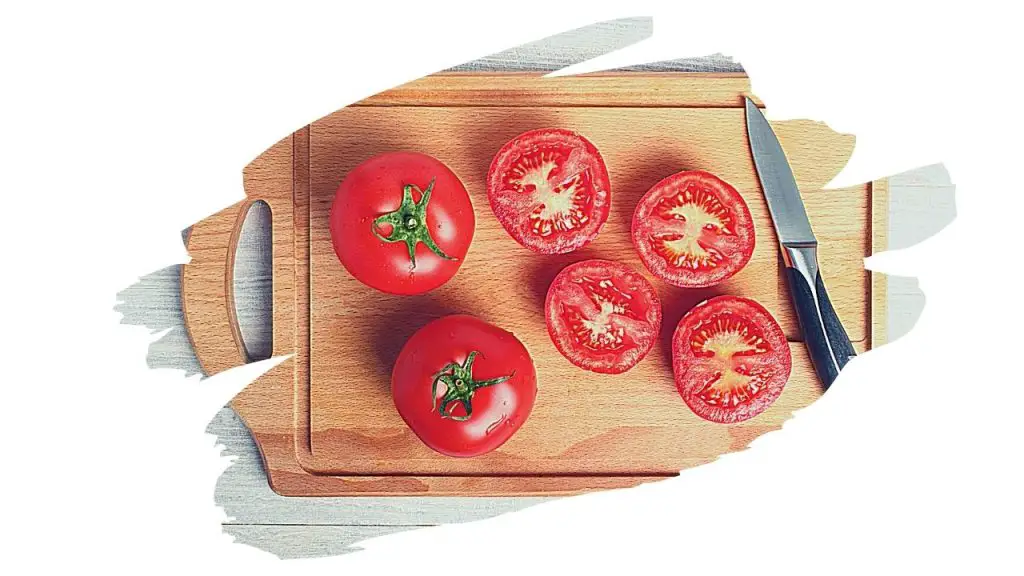
This post may contain affiliate links to products that we receive a commission for (at no additional cost to you). Learn more here.
Edge Grain Cutting Boards: What Are They?
Most modern kitchen cutting boards are made around one of the following three grain types; Edge Grain, End Grain, and Face Grain.
To understand the differences between them, we need to take a moment to look at what each term describes:
Face Grain v Edge Grain v End Grain (Explained!)
A piece of planed wood board has three sides to it;
What does Face Grain mean?
Face grain refers to the most visible part of the wood. This is the wide and broad side.
What do we mean by Edge Grain?
Edge grain describes the long narrow side of the wood. This is the area that we use to measure just how thick a piece of wood is.
So, what does End Grain mean?
Last, but not least, is the end grain. This is the short narrow ‘top’ (or ‘bottom) very ends of the board.
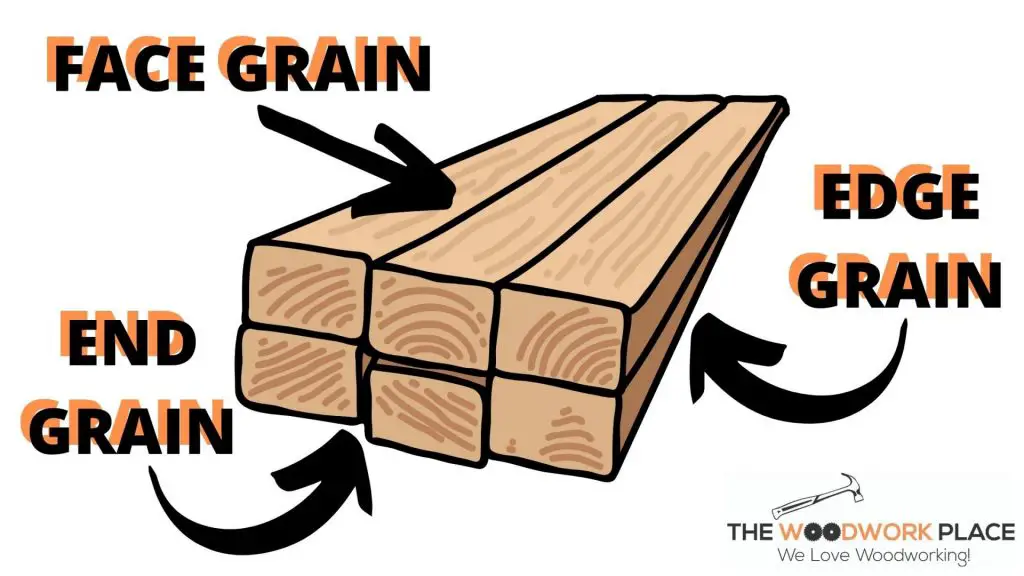
Now, edge grain cutting boards are made by gluing the Face grain side of boards together.
This allows for the Edge grain side to face up visibly as the cutting surface of the board.
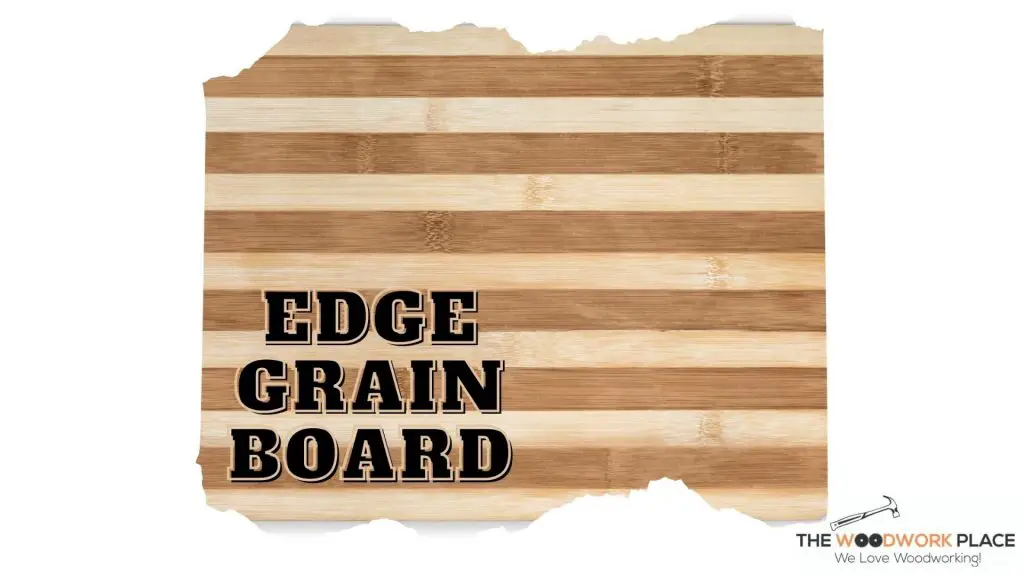
On the other hand, when we refer to a face grain cutting board, we are describing boards that have been glued together along their narrow edge grain side.
We do this so that the Face side of the wood is what we see as the surface of the cutting board.
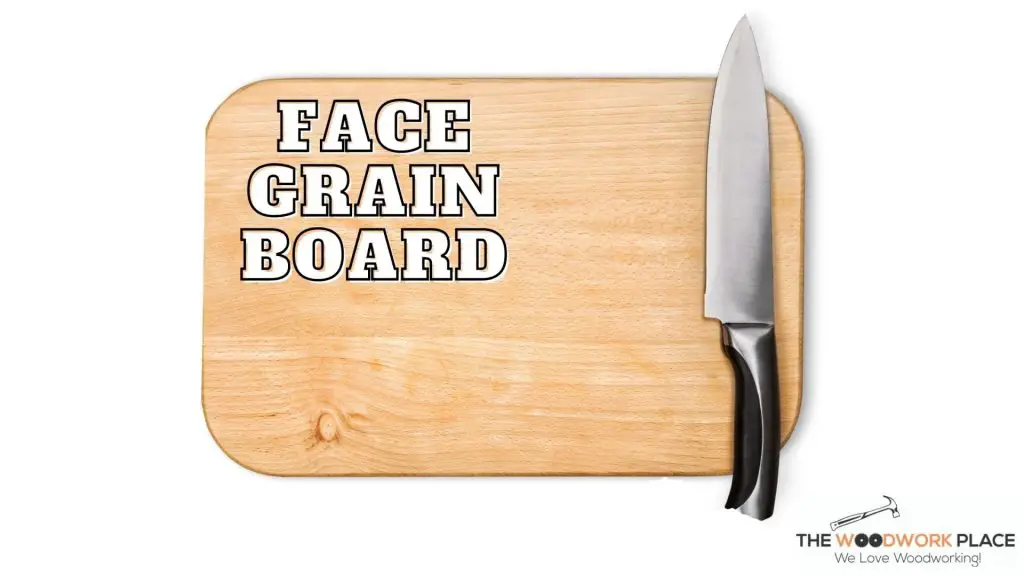
What Is The Difference Between End Grain And Edge Grain Cutting Boards?
End grain cutting boards are specifically crafted so that the end grain side is visible as the cutting boards surface.
These kitchen board types are typified by their checkerboard-styled patterning.
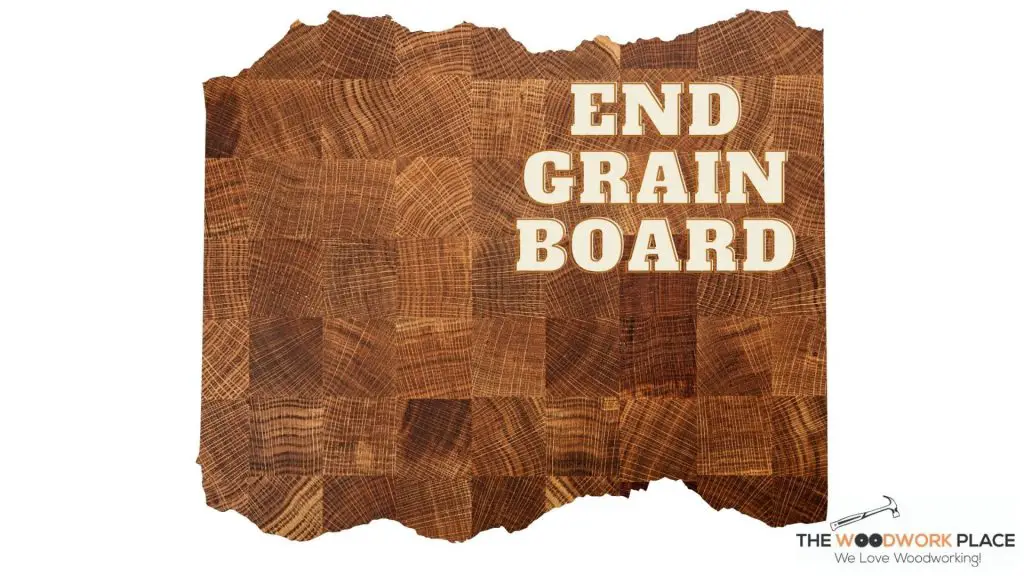
Edge Grain vs Face Grain Cutting Boards: Which One Is Better?
Well, lets compare them according to three key factors; a). Durability, b). Usability, and c). Visibility.
Durability: Which one can hold up better under wear and tear?
Edge grain cutting boards are much better than their face grained counterparts at hiding scratches and marks. This is a key advantage to edge grain boards, since these kitchen items are going to be put through their paces with all of that heavy-duty chopping action.
Winner: Edge Grain
Usability: Which one is better for general day-to-day use?
Both boards are good at taking on everyday light use tasks, such as sandwich making and cookie dough cutting.
And sure, face grain cutting board thickness tends to be a bit more restricted than edge grain boards. However, that shouldn’t stop it from being able to handle general light food prep.
Winner: Draw
Related Post: Walrus Oil Vs Odie’s Oil: Which One’s Better For Your Cutting Board?
Visibility: Which one is more beautiful to look at?
Okay, so this one comes down to personal preference. But, if you love the look of gorgeous tree rings, then face grain boards give you so much more to admire.
With edge grain, a lot of the visuals comes down to the layout of each wood cut, rather than the wood grain itself.
Winner: Face Grain
What Is The Best Cutting Board Material?
You can get kitchen cutting boards made from a range of different materials, such as glass, marble, and even bamboo.
However, the two most popular materials used are wood and plastic (usually made with polyethylene).
Plastic has the advantage of being easier to clean and sanitize. This is clearly a very important benefit, due to the fact that we are going to be preparing food on these utensils.
Still, wood is more hard-wearing, and is better at taking on big cuts long-term.
Related Post: Walrus Oil Vs Mineral Oil: Which One’s Better For Your Cutting Board?
Is Walnut Or Maple Better For Cutting Boards?
When deciding on a wood type for your cutting board, you need to compare each wood types sturdiness.
Ideally, cutting board lumber should have a sufficiently high Janka hardness rank (side-note: Janka hardness is how we measure how much force a sample of wood can take).
Comparing Their Toughness
A cutting board needs to made from wood that hangs around the 900 to 1500 Janka range.
Black Walnut has a Janka hardness level of 1010. On the other hand, Hard Maple can withstand mighty blows, thanks to its 1450 ranking.
So both wood types can easily handle life in the school of hard cuts… 🙂
Related Post: Cherry Vs Maple Cutting Boards (3 Essential Comparisons)
Final Thoughts
So, hopefully that clears up the confusion between edge grain and face grain cutting boards. And, at the end of the day, their main difference really boils down to style verses function.
Ask yourself, would you rather have a cutting board with the look of tree-ringed wood grain? Or do you need a board that has more durability to it?
Once you’ve answered that question, then choosing between these two grain-types is easy:
- Edge Grain Cutting Boards are constructed so that the edge-side of a wood plank is on display. They can handle the wear and tear of food prep much better than face grain boards.
- Face Grain Cutting Boards are made so that the wide face-side of timber is visible. This means that these boards are better at showing-off the lumbers wood grain.
Related Post: Walnut Oil Vs Mineral Oil: Which One’s Better For Your Cutting Board?
References
https://www.wagnermeters.com/moisture-meters/wood-info/end-edge-face-grain-differences/
https://en.wikipedia.org/wiki/Janka_hardness_test
https://chosenstones.com/blogs/blog/what-wood-is-best-for-cuttingboards


